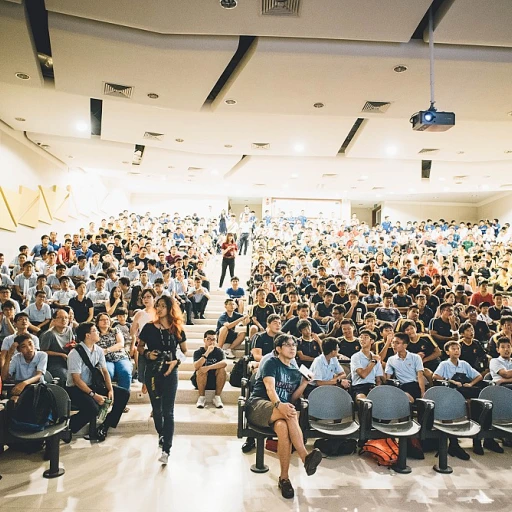Understanding the Cybersecurity Skills Gap
The Growing Demand for Cybersecurity Talent
Cybersecurity is one of those fields where the demand for skilled professionals is skyrocketing. Every year, more organizations find themselves in need of robust security measures, but there's a catch—the talent pool isn't keeping up. The cybersecurity skills gap is a real challenge, and it's affecting businesses across the globe. According to a study by (ISC)2, the shortage of cybersecurity workers is a pressing issue, with millions of positions going unfilled. This isn't just a statistic; it's a wake-up call for companies and professionals alike.
Why the Skills Gap Exists
So, what's causing this gap? A big part of it is the rapid pace of technological advancement. As technology evolves, so do the threats, and security teams need to be on their toes. But it's not just about keeping up with tech; it's also about the skills themselves. Cybersecurity isn't just one skill—it's a whole set of skills, from threat analysis to ethical hacking. And finding people with the right mix of expertise and years of experience can be like searching for a needle in a haystack.
Impact on Organizations
The skills shortage doesn't just affect hiring managers—it has real consequences for organizations. Without the right talent, companies are more vulnerable to cyber attacks, which can lead to financial loss, reputational damage, and regulatory penalties. The Fortinet report highlights how the lack of skilled cybersecurity professionals is leaving many security teams stretched thin, unable to adequately protect their organizations. This gap isn't just a problem for IT departments; it's a risk for the entire business.
As we look at strategies to bridge this gap, it's clear that the role of technology and innovation will be crucial. But it's not just about tech solutions; it's about understanding the human element in cybersecurity. For more insights into how digital transformation is impacting skills gaps, check out this article.
Key Skills Needed in Cybersecurity
Essential Cybersecurity Skills for Today's Workforce
Cybersecurity is more than just a buzzword—it's a necessity in our tech-driven world. With cyber threats lurking around every corner, organizations are on the hunt for professionals who can keep their data and systems safe. But what skills are they looking for? Here's a breakdown of the must-have skills in cybersecurity:
- Network Security: Understanding how networks operate and how to protect them is foundational. Professionals need to know how to set up firewalls, VPNs, and intrusion detection systems to keep unauthorized users at bay.
- Risk Management: Identifying potential threats and vulnerabilities is crucial. Cybersecurity experts must assess risks and implement strategies to mitigate them effectively.
- Incident Response: When breaches occur, quick and efficient responses are essential. This involves identifying the breach, containing it, and recovering from its impact.
- Cryptography: Encryption is the backbone of secure communication. Understanding cryptographic protocols and how to implement them ensures data remains confidential and intact.
- Compliance and Legal Knowledge: With regulations like GDPR and HIPAA, understanding legal requirements is vital for maintaining compliance and avoiding penalties.
- Soft Skills: Communication, problem-solving, and teamwork are just as important as technical skills. Cybersecurity professionals often work in teams and need to convey complex information clearly.
According to a study on skills gaps, the demand for cybersecurity skills is growing faster than the supply. This shortage is creating a competitive market for hiring managers, making it essential for aspiring professionals to hone these skills.
Real-World Impact of Skill Shortages
Organizations are feeling the pinch of the skills gap. A report by (ISC)² highlights that the cybersecurity workforce needs to grow by 145% to meet global demand. This shortage leaves security teams stretched thin, increasing the risk of cyberattacks. Without the right talent, organizations struggle to implement robust security measures, leaving them vulnerable to breaches.
Companies like Fortinet are stepping up, offering training programs to equip workers with the necessary skills. But the journey doesn't end there. Continuous learning and adaptation are key as cyber threats evolve.
In the next section, we'll explore how organizations can address this skills gap and build a stronger cybersecurity workforce.
Impact of the Skills Gap on Organizations
The Ripple Effect on Businesses
The shortage of skilled cybersecurity workers is more than just a nuisance; it's a real barrier for companies looking to secure their digital assets. Organizations facing a workforce gap in this field often find themselves scrambling to fill crucial roles, with hiring managers in a race against the clock. The cyber workforce deficit means security teams are stretched thin, which leaves vulnerabilities unaddressed, leading to potential risks costing businesses dearly.Examining the Cost of the Gap
Let's face it, the lack of cybersecurity skills can have significant financial repercussions. Companies may encounter operational disruptions, data breaches, or even regulatory penalties. A report from ISC suggests the talent shortage can stymie a firm's ability to innovate and leverage new technologies, holding them back in the competitive arena. The longer the gap persists, the higher the risk of incidents that could jeopardize a company's reputation and bottom line.Challenges for Hiring Managers
Hiring managers are facing an uphill battle, fishing from a pond with fewer fish year after year. With every entry-level job, companies hope to fill, the struggle to find cybersecurity talent with the required years of experience is all too real. According to the Fortinet study, the demand far exceeds the supply, leading to high competition over qualified professionals. This talent shortage often forces organizations to rely heavily on training, which while essential, takes time and resources.Industry Standards and Evolving Threats
With cyber threats on the rise, organizations continuously face more complex security challenges. Outdated training can leave professionals underprepared for current threats. The dynamic nature of cybersecurity requires frequent upskilling to keep up, yet only a handful of workers get sufficient training. Addressing this skills shortage also involves revamping educational approaches, a perspective discussed in the Bridging the Skills Gap in Data Analytics. As we continue discussing the skills gap's impact, it's crucial to remember that adaptation and resilience are key to overcoming these barriers. The journey to closing the workforce gap is ongoing, calling for innovative solutions and collaborative efforts.Strategies to Bridge the Skills Gap
Enhancing the Cybersecurity Talent Pool
The gap in cybersecurity skills is like a stubborn puzzle. Yet, getting the pieces to fit is manageable with the right strategies. Companies are starting to adopt various approaches to strengthen their security workforce and fill these voids effectively. One popular tactic is investing in strong training programs. Organizations are realizing the value these programs bring in boosting the knowledge and skills of cybersecurity workers. For example, Fortinet shares in their report how tailored training initiatives not only help current employees level up but also attract fresh talent eager to enter the field. These thorough training sessions ensure everyone stays up to date with emerging cyber threats. Another route is beefing up internal resources by promoting a culture of continuous learning. ISC's cybersecurity workforce study highlights that inspiring cybersecurity professionals to regularly update their skills can create dynamic security teams that adapt swiftly to new challenges. Collaboration stands as a crucial element too. Companies are starting to join forces with academic institutions to shape the next generation of cybersecurity professionals, ensuring students gain the necessary skills before they face real-world cyber threats. Bridging academia and industry through internships and co-op programs proves mutually beneficial, enhancing the pipeline of job-ready graduates. Moreover, organizations are refining their hiring practices. By focusing less on strict years of experience, companies are now considering the potential and transferable skills of candidates. This shift allows entry-level workers to demonstrate their capabilities and show how they can quickly grow into cybersecurity jobs. An innovative strategy involves tapping into global cybersecurity talent. Remote work has widened the hiring pool immensely, allowing organizations to bring on board skilled professionals from different corners of the earth, helping narrow the gap amidst a local talent shortage. While the challenge of the workforce gap in cybersecurity remains, it's noteworthy how companies are devising creative solutions to strengthen their security capabilities and protect themselves from cyber threats. With more organizations focusing on creating robust pathways for nurturing talent, there's optimism we can bridge this gap together.Role of Technology and Innovation in Addressing the Gap
Tech Tools and Innovations Making Waves
In the fast-paced world of cybersecurity, technology is not just a tool but a game-changer. Over the years, we've seen a surge in innovative solutions designed to tackle the skills gap head-on. From AI-driven threat detection systems to automated response tools, technology is reshaping how security teams operate. These advancements are not only enhancing efficiency but also allowing cybersecurity professionals to focus on more complex challenges, thus making the field more attractive to new talent.
Training Platforms: A New Era of Learning
The rise of online training platforms has been a boon for aspiring cybersecurity workers. Platforms like Fortinet's Network Security Academy and ISC's training programs offer accessible and flexible learning opportunities for both entry-level and experienced professionals. These platforms are designed to keep pace with the latest threats and technologies, ensuring that learners acquire relevant cybersecurity skills that organizations desperately need.
Collaboration Between Industry and Academia
Bridging the gap requires a collaborative effort between educational institutions and the cybersecurity industry. Many universities and colleges are partnering with companies to develop curriculums that reflect real-world needs. This collaboration ensures that graduates are not just theoretically prepared but also ready to tackle the practical challenges they will face in cybersecurity jobs.
Certifications: The New Gold Standard
Certifications have become the gold standard in hiring for cybersecurity positions. Organizations value certifications like CISSP, CEH, and CompTIA Security+ as they validate a professional's skills and knowledge. For hiring managers, these certifications are a reliable measure of a candidate's ability to handle security tasks effectively. This trend underscores the importance of continuous learning and professional development in the cybersecurity workforce.
Real-World Applications and Success Stories
Many organizations have successfully bridged their skills gap by investing in technology and training. A study highlighted how companies that integrated AI tools and robust training programs saw a significant reduction in their cybersecurity talent shortage. These success stories serve as a beacon for others, demonstrating that with the right strategy, the skills gap can be narrowed.












